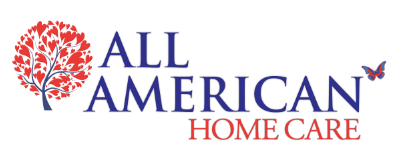
Care Plan for Stroke Patient at Home
May 05 2020
Stroke Care Plan
A stroke almost always happens unexpectedly. In most cases, even if a person is at risk, he or she often does not devote much time to the prevention of this disease. So, what should be done if a stroke happens?
When an emergency occurs, the person first arrives in the intensive care unit. After that, he or she gets transferred to the neurological ward of the hospital. There a nursing care plan for stroke patients is applied to foster the restoration of affected cells.
However, post-stroke treatment should not end after the person exits the hospital. The doctor always provides a care plan for a stroke patient at home. It is crucial to follow this set of instructions. Trust a professional caregiver, contact All American Home Care! Our skilled home care team is here to help 24/7. We provide first-class care for stroke patients all across the country.
Right on Time
For those who have suffered an acute circulatory disturbance in the brain, timely, prompt, and competent rehabilitation after a stroke is a first and critical step on the road to restoring health. To achieve the maximum clinical effect, it is essential to rely on the help of experienced specialists.
As soon as the patient’s condition becomes stable, the beginning of the rehabilitation process becomes possible. An example of a care plan for a stroke patient usually can be divided into three key stages and looks as follows:
Stage One
1During the first step, the patient maintains a supine position. It is very often that after a severe form of stroke, the person is motionless. During this period, rehabilitation activities are limited by his condition and consist of the systematic turning of the patient, specialized anti-decubitus massage, and respiratory exercises.
Medical rehabilitation specialists continuously talk with the patient, even in the absence of a pronounced reaction to the speech: passive listening activates attention, and gradually understanding of speech returns. The first stage of recovery can last from several days to several months, depending on the severity of the stroke.
Stage Two
2Within the second stage, also known as the early one, the patient can already make a certain set of movements. Even though visible improvements can be seen, an independent rise from the bed is not possible for him yet.
The patient undergoes passive kinesiotherapy (motion treatment – specialized gymnastics, massage), physiotherapy. Rehabilitation specialists work on eliminating aphasia (speech impairment) and memory restoration. The early phase can last from several weeks to six months.
Stage Three
3The third stage is the period of late rehabilitation: at this time, active restoration of the motor, mental, and emotional functions and skills happens. The patient can already do exercises on his own, as well as try to sit in and get up from the bed. At this stage of the nursing care plan for a stroke patient, occupational therapy plays an important role.
Labor treatment is a set of measures aimed at the development of fine manual motility. Rehabilitation also includes drug therapy, sessions with a speech therapist and psychologist. The late recovery phase may take from six months to two years.
How Long Does a Stroke Recovery Take?
There is no fixed rehabilitation period from hemorrhage. The speed of recovery depends on the size and location of the affected area. Other factors include the type of stroke and the time that passed from the moment it started, to when medical care was provided. Compliance with the doctor’s instructions also affects the process, especially when it comes to a home care plan for the patient.
Estimated periods of rehabilitation are as follows:
- Stroke with a minimal neurological deficit – mild paralysis of the face, limbs, impaired vision, impaired coordination, dizziness. Partial recovery occurs after 1-2 months, while full recovery is possible after 2-3 months. However, it depends on the rehabilitation potential of the patient.
- Stroke with a severe neurological deficit – gross paralysis of the face, limbs, serious coordination disorders. The patient has the opportunity for self-care after six months; full recovery takes years.
- Severe hemorrhagic and ischemic strokes with persistent neurological deficits lead to disability of the patient due to paralysis and other defects. Partial recovery is possible in 1-2 years. With a gross neurological deficit, a complete return to a healthy state is impossible due to the necrosis of significant clusters of brain neurons, the functions of which cannot be taken by neighboring cells.
The patient must realize that recovery from any stroke should never stop. Short daily procedures will not only help restore former skills and qualities but also prevent new attacks.
The fundamental principle of a stroke care plan is to focus on an individual approach while restoring the health of each patient. Doctors carefully study the history and clinical picture of the disease, analyze the degree of brain damage and impaired basic functions, assess the severity of the post-stroke condition.
Our specialists are certified and experienced. We will pick an individual treatment regimen and plan a preliminary recovery course for every particular person. Contact us now to receive more information on your case!
Home Treatment
Any disease, especially a stroke, takes enormous effort to recover from. Those around the post-stroke patient must possess the techniques and skills to take care of him, show him attention, and support him throughout the long period of recovery. Those around must create a positive emotional climate around the person during rehabilitation therapy.
When providing care for the patient, it is necessary to encourage his mobility and independence all the time, to praise every small achievement, and to not allow him to get depressed or lay down for too long. Besides, measures aimed to prevent the re-occurrence of a stroke are taken. It allows us to consolidate and prolong the therapeutic effect and prevent the person from health risks in the future.
Here is a general care plan template for home care that a patient’s home caregiver follows:
Hygiene
- The patient’s bedding should be made and changed at reasonable intervals. It is necessary to make the bed with special care, smoothing out all the folds and bumps, as they can cause skin irritation and even bedsores for the patient.
- The person recovering from a stroke has to keep strict cleanliness. If the patient is relatively mobile, he needs help to wash up, and also brush his teeth. If he cannot do this at all, a caretaker should wipe his face, neck, the area behind his ears, and all folds of skin with a gauze napkin or cotton soaked in warm water.
- It is necessary to thoroughly clean the patient’s oral cavity if he cannot do it himself. If applicable, dentures have to be taken out for the night. Dentures cannot be used by patients that are not in a conscious state.
When both the caretaker and recovering person follow the instructions carefully, the post-stroke state should gradually subside, and the person will feel better. Nevertheless, especially in the beginning of the rehabilitation process, an essential part of the care plan for the stroke patient at home is to monitor any changes on the surface of the patient’s skin (rash, cracks, peeling, etc.).
Keep in mind that when weakened patients lie on their backs for too long, blood circulation in the soft tissues and skin is disturbed, especially in those places that are most densely pressed to the bed: sacrum, shoulder blades, elbows, and heels.
The formation of pressure sores can also be caused by poor hygienic care of the skin, an uncomfortable bed, or crumpled linen. Therefore, the patient needs to be turned every 2-3 hours and left in a new position for a while. The use of anti-decubitus mattresses has also proven to be efficient.
Hygiene is essential in the rehabilitation process. No stroke care plan template for home care pays little attention to this topic, since every small detail matters.
Nutrition
A healthy diet is the part of a nursing care plan for stroke patients that provides the recharge for a body that has gone through an immense amount of stress. Good food always helps regain powers and brings some joy along the tough road to recovery.
A seriously ill patient should be fed with non-hot liquid semolina, jelly, sour-milk products, mashed liquid vegetable puree, and similar foods with a teaspoon. It is convenient to use a blender to grind food. It should be served in small portions so that the patient has time to chew it and avoid choking.
A patient in a severe condition has to eat 4-5 times a day (300-400 mg per serving). The total volume of liquid food should be around 1.5-2 liters per day. The ration should not contain anything heavy for the stomach and yet be high in calories for a faster recovery. Avoid fried food, spices, tea, coffee, and sugar.
Motor Activation
Another crucial part of a stroke care plan is restorative exercises.
- When the patient is lying on his back, the paralyzed arm should be taken away at an angle of 40-60° from the body or put on his stomach in a bent form.
- As the patient fully regains consciousness, and possibly speech, the regimen must be changed. After the doctor’s permission, the caretaker can lift the patient in bed and place pillows behind his back. Later on, the patient will gain enough strength to rise on his own.
- Those who can independently sit in bed have to be supported to try it with a stable chair next to the bed. If the patient easily tolerates a sitting position (no dizziness, weakness, fear), he is offered to stand near the bed, holding on to something for support.
- After the patient has learned to get up, he will learn to walk again, first with the help of a special support cane with four legs, then with an ordinary cane. Have patience, as slowly the leg muscles will become stronger, and walking ability will be restored.
- Gripping objects, crumbling paper, moving fingers, and toes, sitting trunk rotations, and more exercises are proven to be very helpful in the treatment of stroke survivors.
The entire period of recovery of movements takes about six months, and during this time, every day, you need to conduct massage and exercise therapy. Then you can be sure that everything was done for the patient’s recovery.
Every Detail Matters
When going through a care plan for a stroke patient at home, one cannot miss even one day. Soon enough, the patient will already work out movements, the muscles will strengthen, and the energy level will rise.
It is a long process that requires skill, patience, and expertise. It is almost impossible for a non-qualified person to fulfill the functions of a nurse, physician, speech therapist, and psychologist all at once. Don’t risk it! Every small thing counts on the way to restoring a stroke patient’s health! Trust our services as we treat every patient as a family member. Request more free information now, and we will gladly be in touch!





